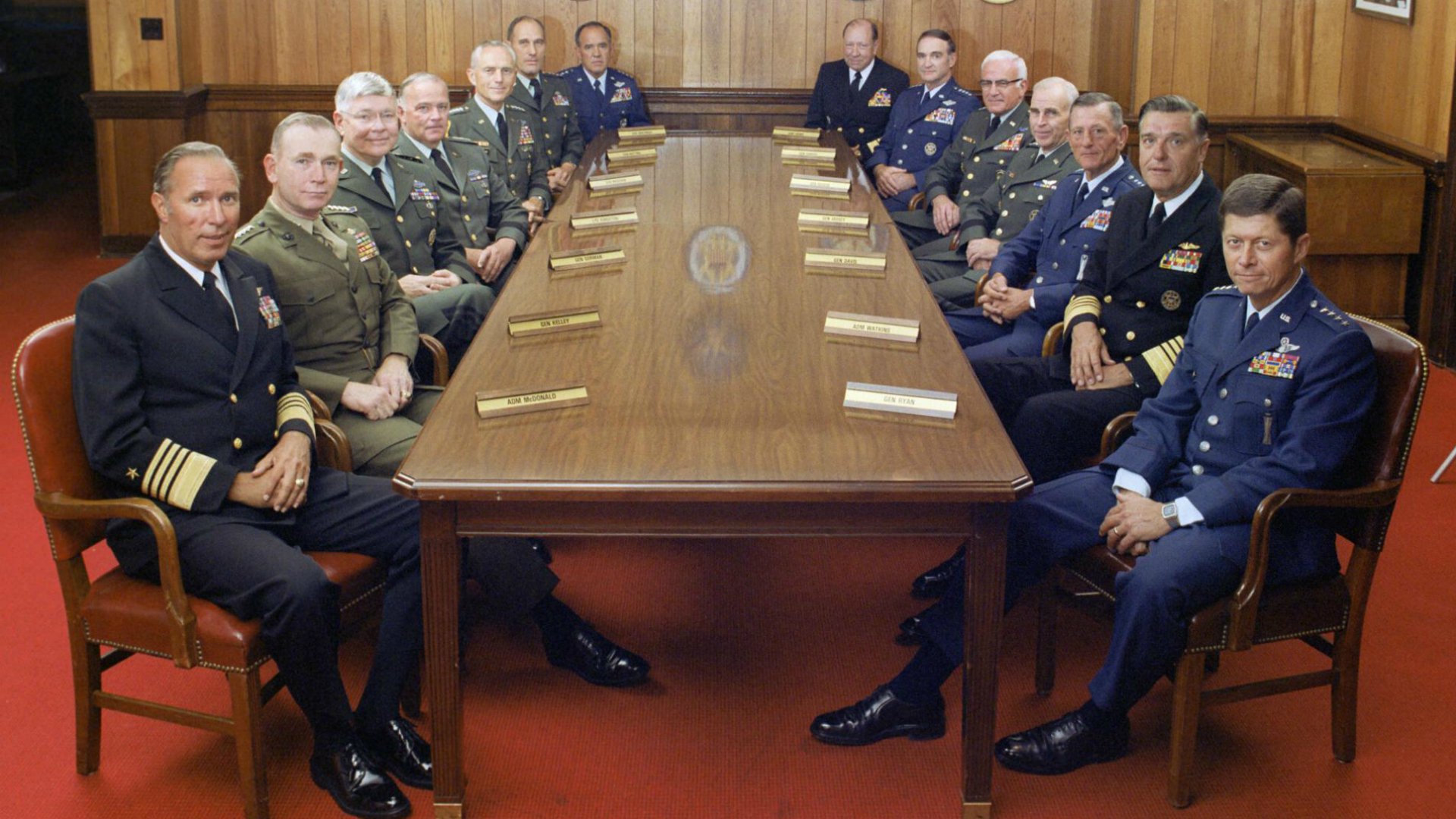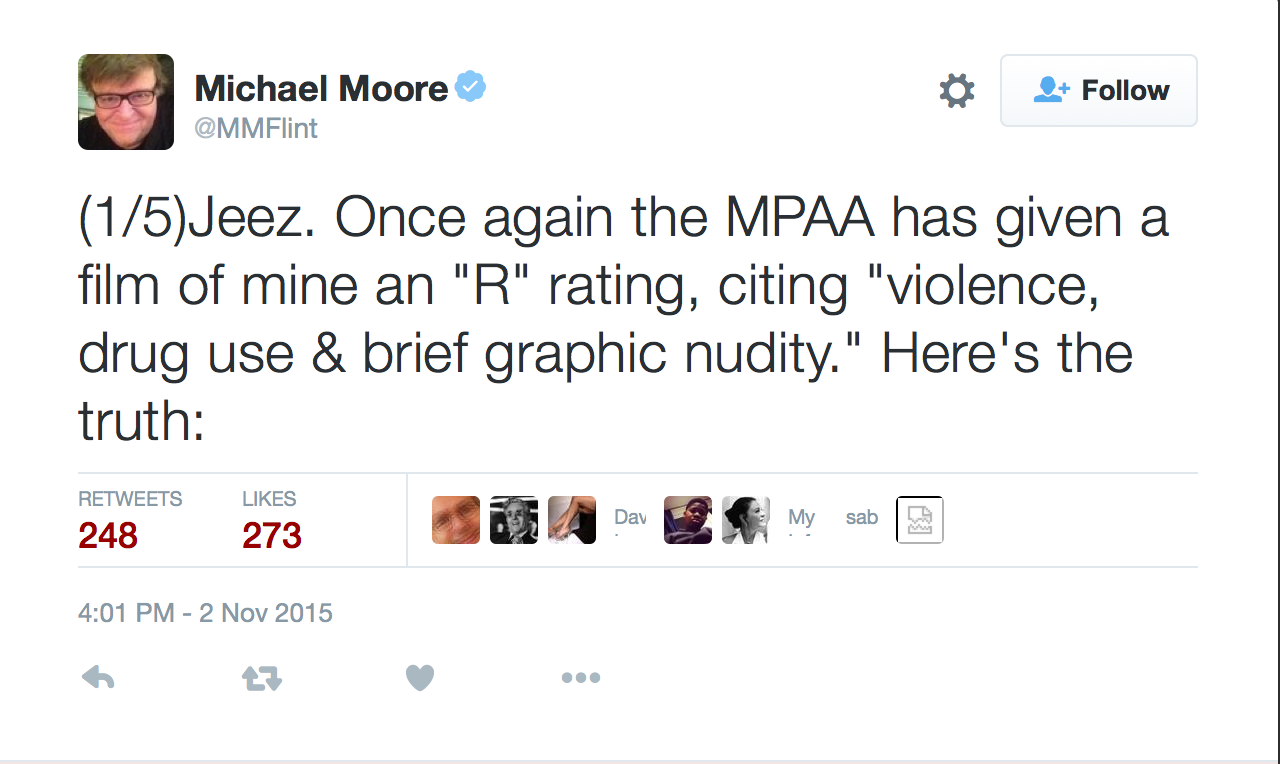In “Where to Invade Next,” Why Does Michael Moore Call Himself a “Crazy Optimist”?
Michael Moore’s Where to Invade Next (2016) features the filmmaker announcing a rebranding. “I’ve turned into this kind of crazy optimist,” he says. He told The Washington Post, “If anything is different, it’s that I’m in a much happier place.” After all the films he’s made exposing the dark problems in US society, he said, “you reach a point in your life when you just want to see change happen. I’m really kind of tired of talking about it. I want action.”
His newest documentary takes a playful tone, focusing on positive examples of social policies from other (mostly European) countries that Moore recommends the US “steal.” Moore presents his utopia as illustrated through a series of mostly European countries — what we might call his “Eurotopia” (although near the end he also mentions Iran and Brazil and visits Tunisia, where he conducts one of the film’s most compelling interviews).
In Italy, where Moore “steals” their up to 8 weeks paid vacation, including paid honeymoons, Moore presents a people constantly having sex, kissing and touching in public, taking hours in the middle of the day to eat great meals at home, accompanied by dreamy music, looking relaxed and happy. In France, Moore experiences a delicious three-course school cafeteria meal with rural French schoolchildren. In Finland, which tops global rankings in education, an education professional declares, “Homework is obsolete,” and kids need time to be kids. The schools have no standardized tests, and it is illegal to charge tuition, so private schools are rare. And because the rich kids go to school with the poor kids, Moore argues, rich parents are motivated to make the public schools good.
His next stop is Slovenia, where university is free. In Germany, we visit a thriving middle class with good wages. “If everyone takes a little bit care of their neighbor, life is easier for everyone. It’s common sense,” says a German woman at the spa, where German workers get to go for three weeks’ paid vacation. In Norway, we see model prisons with low recidivism rates due to the focus on rehabilitation instead of punishment. In Portugal, we see the positive effects of no longer arresting citizens for drug possession. In both Norway and Portugal, prisoners are allowed to vote.
As a playful romp through these countries and their social successes, Moore’s film fits its “optimistic” label. Where to Invade Next is a departure from past films in that it tries to put forward a constructive blueprint of how we could create a better America. He crafts a positive view of what could be, rather than solely focusing on what’s wrong. Arguably, many political documentaries present problems, obstensibly to raise awareness but without offering potential concrete steps that contribute any change to the situation. Moore is trying to spread actual ideas for social policies and improvements we can implement in the US.

Where to Invade Next (2016)
Despite the surface positive outlook, though, the subtext in every scene is how terribly the US fails in every area Moore examines: vacation days, school cafeteria food, our prison system, taxes, education, sex ed, drug laws, etc. Just as the film’s opening sequence, set to eerily dramatic music, is a run-down of the worst moments in US recent history, the film is a catch-all of everything wrong with the US. For example, as soon as Moore shows the German schools’ teaching of the Holocaust, noting, “They treat it as their original sin,” he reminds us that “until 2015 United States never had a museum of slavery.” Oddly, although Moore has tried to create a positive vision of the policies he admires, the contrast between American dream and reality can have a depressing effect on the viewer. Through implicit comparison, Where to Invade Next addresses a seemingly endless list of abject failures in American society. Where To Invade Next can feel like a grab bag of everything that the US gets wrong and others get right — almost effortlessly, it seems, given the feathery-light tone of the film. (Of course, in reality, there are problems Moore has not depicted in Europe, which has been recently engulfed in financial and migrant crises. His interest is not the real Europe but his Eurotopia as a means to express his vision of what the US could ultimately become.)
The movie has also met with predictable obstacles from Moore’s detractors. No matter how constructively Moore intends the film, Moore is by now such a polarizing figure that few audience members who aren’t already liberal will be open to its message. In December 2015, Moore announced that the MPAA denied his appeal to overturn the film’s “R” rating, which he sees as politically motivated. Moore responded via twitter:

He continued: “The ‘violence’ in WHERE TO INVADE NEXT is footage of the NYPD officers killing an unarmed Eric Garner on a Staten Island sidewalk.”
“The ‘drug use’ in WHERE TO INVADE NEXT is me showing how Portugal ended their ‘war on drugs’. Haven’t arrested a 1 drug user in 15yrs.”
“The ‘brief nudity’ in my film is 2 secs of Germans whose health care card gives em 3 free wks @ a spa if stressed. Don’t show us that!”
Moore told Variety, “It’s the subject matter that makes [the MPASA] nervous. It’s volatile subject matter that we are still without adequate healthcare in this country. But there isn’t gratuitous violence in the film and nobody is having sex. I’m not encouraging drug or alcohol or tobacco use, so what’s the problem?” He also said, “I see PG-13 movies where literally hundreds of characters are mowed down with guns or bombs.”
The fact that the MPAA does give this film an R rating, compared to the more violent or sex-filled films that get PG-13 ratings, could indicate there are many in the US who do not want this movie to be seen. And while Moore will struggle to convert many new minds, the converted may feel crushed after viewing Where to Invade Next: how are we to execute these changes given the place we’re starting from?
Moore gives us a broad picture of the US as a country that spends 60% of our taxes on a military for unsuccessful wars and operates a modern form of slavery by jailing vast numbers of black people and profiting off free (or almost free) labor. Moore’s duality between idyllic Eurotopia and hellish USA is gigantic, even appearing insurmountable in light of the broken US systems that he highlights. Moore presents constructive solutions (institute more vacation days, get healthier food in schools, stop jailing people for drug possession), yet he has no path for overcoming the institutional resistance in our political environment. (Of course, we cannot expect him to offer us detailed plans for implementing social policy within the movie — this would be a silly thing to ask of a 2-hour film, and he is ultimately an entertainer.)
Maybe it is less important to ask if the film is optimistic than whether it will be informative for Americans who don’t know much about the world outside the US. Where to Invade Next shows Americans just how different life can be in other countries, in many ways for the better. Many viewers could use the eye-opener about what Europe’s welfare system really does for its citizens. The most passionate speech in the film is from a Tunisian radio journalist who tells the US that, while we are the strongest country in the world, we need to be interested in other ways of life outside our country. Instead of watching the Kardashians, she says, we should take interest in Tunisia, Estonia, Zimbabwe and more cultures we know next to nothing about. She adds that if we continue with our current attitude that we’re the best and we know everything, it won’t work.
The complex optimism of Where to Invade Next is the vision of an idealist who sees where America could rise to despite our current state of affairs. But in the end, whether or not Moore feels optimistic is less important than how the film makes audiences feel. Understanding the gulf between what is and what could be may produce in some audiences a sharp depression or a defensive anger — if, as with Pandora’s box, a seed of hope will sail in among the louder emotions.
Moore notes that sometimes what seems impossible can happen all at once if we take action—just as the Berlin Wall, after seeming indestructible for so many years, quickly fell under so many hammers. Pointing out that the US was the original source of these social policies now benefiting European citizens, Moore says, “The American Dream seemed to be alive and well everywhere but America. These were our ideas. We didn’t need to invade. We just needed to go to the American lost and found.” In overwhelming the viewer, even upsetting some of us, Moore believes he can drive our country to hammer down walls and suddenly change everything.

